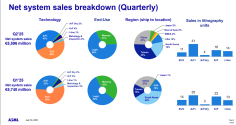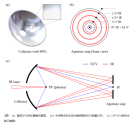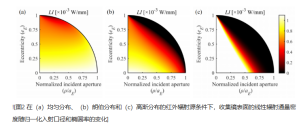Nikkei certainly isn't a credible source when it comes to something as secretive as Chinese lithography. Chinese foundries don't have much reason to expedite their adoption of domestic DUV when they already have an excess of ASML scanners. There are also already fully domestic lines running.According to this article, SMEE duv tool for 28NM is still not ready. I thought they released it in 2023. Did it get delayed?
If China is still stuck in 90NM machines then its not getting EUV in 10 years
You are using an out of date browser. It may not display this or other websites correctly.
You should upgrade or use an alternative browser.
You should upgrade or use an alternative browser.
Chinese semiconductor thread II
- Thread starter vincent
- Start date
ASML Q2 2025 financial results

China still 27% of revenues, and much more when counting the number of machines, because the most expensive EUV and immersion DUVi are banned in China.
I guess the biggest part of those 34 machines: DUV dry, KrF and i-line went to China.
Still not fully sure that none of those 31 ArFi (DUV immersion) machines went to China....
A quick check: of 76 machines shipped 42 are EUV and DUVi immersion, i.e. 55%. Because EUV and DUVi are way more expensive than the others, China could not reach 27% of revenues even if all the other machines went to China (that is a quite impossible condition anyhow).
This makes me think that some DUVi slipped through

China still 27% of revenues, and much more when counting the number of machines, because the most expensive EUV and immersion DUVi are banned in China.
I guess the biggest part of those 34 machines: DUV dry, KrF and i-line went to China.
Still not fully sure that none of those 31 ArFi (DUV immersion) machines went to China....
A quick check: of 76 machines shipped 42 are EUV and DUVi immersion, i.e. 55%. Because EUV and DUVi are way more expensive than the others, China could not reach 27% of revenues even if all the other machines went to China (that is a quite impossible condition anyhow).
This makes me think that some DUVi slipped through
Last edited:
ASML Q2 2025 financial results
View attachment 156184
China still 27% of revenues, and much more when counting the number of machines, because the most expensive EUV and immersion DUVi are banned in China.
I guess the biggest part of those 34 machines: DUV dry, KrF and i-line went to China.
Still not fully sure that none of those 31 ArFi (DUV immersion) machines went to China....
A quick check: of 76 machines shipped 42 are EUV and DUVi immersion, i.e. 55%. Because EUV and DUVi are way more expensive than the others, China could not reach 27% of revenues even if all the other machines went to China (that is a quite impossible condition anyhow).
This makes me think that some DUVi slipped through
ASML has many models of DUVi lithography machines and they are still allowed to sell their less advanced DUVi machines in China (IIRC, for 14nm and above).
When did they said that all DUVi are banned to China? I thought it was only for selected fabs? And that pre-2000i stuff could still be sold.ASML Q2 2025 financial results
View attachment 156184
China still 27% of revenues, and much more when counting the number of machines, because the most expensive EUV and immersion DUVi are banned in China.
I guess the biggest part of those 34 machines: DUV dry, KrF and i-line went to China.
Still not fully sure that none of those 31 ArFi (DUV immersion) machines went to China....
A quick check: of 76 machines shipped 42 are EUV and DUVi immersion, i.e. 55%. Because EUV and DUVi are way more expensive than the others, China could not reach 27% of revenues even if all the other machines went to China (that is a quite impossible condition anyhow).
This makes me think that some DUVi slipped through
I mean you cannot generate 27% of your revenue from a country without selling EUV and Arfi to that country.
It is ambiguous, as ASML has stopped disclosing its DUVi sales data with respect to China earlier this year. The shift to restricting sales started in January of last year (), and then in January of this year ASML stopped releasing sales data altogether ().When did they said that all DUVi are banned to China? I thought it was only for selected fabs? And that pre-2000i stuff could still be sold.
I mean you cannot generate 27% of your revenue from a country without selling EUV and Arfi to that country.
In my view it may be to China's best interest in the long run as it will invest in competing technology and not depend on foreign lithography tech.
What you even talking about? Even if we go for the "official" channels there was an announcement for a 65nm dry litho machine. You are old enough in this thread to know about that. If we go based on the things posted here, is pretty clear that there is already, not a immersion machine for 28nm process but for a 14nm process already working and patterning wafers.According to this article, SMEE duv tool for 28NM is still not ready. I thought they released it in 2023. Did it get delayed?
If China is still stuck in 90NM machines then its not getting EUV in 10 years
My guess they they don't want to freak out the EU and invite more restriction on ASML maintenance of the current fleet of lithography machines. They don't care if US toolmakers disappear from China. But ASML is a different story due the high level of maintenance of their machines.
ArFi scanners make 43% of the sales at a 75 million at piece, assuming China 27% market share and assuming that 80% of that is ArFi just by price. That could mean that between 12-15 Arfi scanners? was shipped to China in Q2ASML Q2 2025 financial results
View attachment 156184
China still 27% of revenues, and much more when counting the number of machines, because the most expensive EUV and immersion DUVi are banned in China.
I guess the biggest part of those 34 machines: DUV dry, KrF and i-line went to China.
Still not fully sure that none of those 31 ArFi (DUV immersion) machines went to China....
A quick check: of 76 machines shipped 42 are EUV and DUVi immersion, i.e. 55%. Because EUV and DUVi are way more expensive than the others, China could not reach 27% of revenues even if all the other machines went to China (that is a quite impossible condition anyhow).
This makes me think that some DUVi slipped through
The Institute of Microelectronics of the Chinese Academy of Sciences has made new progress in suppressing infrared radiation from EUV lithography collectors
Extreme ultraviolet lithography (EUVL) technology is a key technical path to advance semiconductor manufacturing processes towards more advanced processes. The current mainstream LPP-EUV light source system bombards tin plasma with 10.6-micron wavelength infrared laser (IR) to generate extreme ultraviolet radiation, which is focused to the intermediate focus (IF) position by a collecting mirror. However, if the residual infrared radiation in the system enters the exposure optical system, it will generate unnecessary heat load, which will affect the stability and exposure quality of the lithography system. Therefore, effectively suppressing infrared radiation is crucial to ensuring the performance of the lithography machine.
Currently, the industry usually integrates spectral purification filter structures (SPFs) on the surface of EUV collection mirrors to filter infrared radiation energy, but the existing evaluation method only relies on the single physical quantity of diffraction efficiency to evaluate the suppression effect, which lacks comprehensiveness.

A researcher at the Institute of Microelectronics, Chinese Academy of Sciences, has made a breakthrough in this field. The team proposed a theoretical model of infrared suppression ratio (IRSR) based on linear radiation flux density. This model can integrate and reduce the dimension of the infrared radiation flux of the collector mirror, effectively integrating multiple key factors such as the energy distribution of the light source, the geometric shape of the collector mirror, the reflection characteristics of the multilayer film, and the grating diffraction efficiency, and realizes the precise analysis of the contribution mechanism and quantitative weight of each factor to the local and global IRSR of the collector mirror.

Compared with the existing evaluation methods that only rely on a single physical quantity, this model introduces a multivariate comprehensive analysis framework, which confirms that the global IRSR is actually the weighted harmonic mean integral of the local IRSR, where the weight function is the linear radiation flux density on the collector surface. This research has laid a solid theoretical foundation for the coordinated optimization of the collector and SPF and the precise measurement of IRSR.

The relevant research results were published in the optics journal Optics Express under the title "Modeling and evaluation for the infrared suppression ratio of an EUV collector with integrated spectral purity filters". Jin Hao, a doctoral student at the Institute of Microelectronics, is the first author of the paper, and Qi Yuejing, a researcher, is the corresponding author. The research was supported by the Strategic Priority Research Program of the Chinese Academy of Science
With an investment of over 10 billion yuan, the Southwest Production Base of Pioneer Group's semiconductor high-end equipment manufacturing was signed and landed
According to Suining News Network, a signing ceremony for a cooperation project between the People's Government of Anju District, Suining City and Guangdong Pioneer Rare Materials Co., Ltd. was successfully held a few days ago, marking the official landing of the Pioneer Group's Southwest Production Base Project for Semiconductor High-end Equipment Manufacturing with a first-phase investment of 3 billion yuan and a planned total investment of 10.6 billion yuan in Anju Economic Development Zone.
It is reported that the Southwest Production Base Project for Semiconductor High-end Equipment Manufacturing mainly produces high-end semiconductor equipment and core accessories. The first phase has a planned investment of 3 billion yuan and covers an area of 200 acres. After production, the annual output value is expected to reach 5.3 billion yuan and the annual tax revenue is 150 million yuan. After the second phase is launched, the total investment scale is expected to exceed 10 billion yuan, and it will become the largest new energy coating production base and the largest semiconductor high-end manufacturing base in the southwest region.
This project will not only fill the gap in semiconductor equipment manufacturing in the west, but also help our city build a "5+1+N" modern industrial system and contribute to the construction of a world-class equipment manufacturing industry cluster in the Chengdu-Chongqing region.
Not to throw cold water on this: "it is pretty clear that there is already, not a immersion machine for 28nm process but for a 14nm process already working and patterning wafers.", but there have been comments by others that chips have microscopic engravings that indicate what lithography machine was used. Wouldn't domestic 14 nm chips be easily identifiable?
